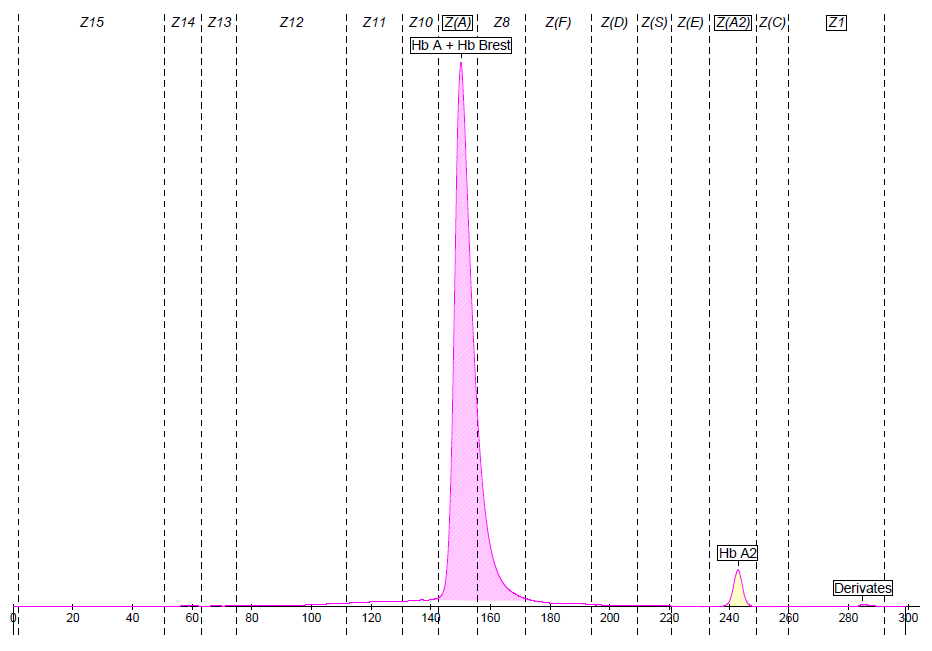General information
Globin chain involved
Status
Heterozygous
Migration zones
Migration positions
150
Sickle Cell Disease: No
Thalassemic variant: No
Capillary Electrophoresis
Fractions
Value %
Hb A + Hb Brest
96.5
Hb A2
3.2
Derivates
0.3
Comments
Hb Brest is an unstable variant which leads to the occurrence of an additional peak of degraded hemoglobin in Z1 zone.
Mutation data
Heterozygous Hb Brest
Mutation
HGVS Nomenclature
Beta 127(H5) Gln>Lys
HBB:c.382C>A
Hematological parameters
Name
Result
RBC Count
No information
Total Hemoglobin
Low
MCV
No information
MCH
No information
Blood smear
Heinz bodies
Other analysis
No information
Comments on hematology
Hemolysis, reticulocytosis
Clinical context
Clinical presentation
Anemia symptoms
Clinical risk
May cause intermediate hemolytic anemia in combination with Beta-thalassemia
Variant information
Stability
Unstable
Oxygen affinity
No data
Ethnicities in literature
Found in a 9-year-old French boy, but not in the parents. Presumably a de novo mutation
Comments on variant information
The rare variant Hb Brest has never been observed outside of this case.
Scientific Literature
Scientific references
Globin Chain involved
Status
The term "Double Heterozygous" refers to cases of heterozygosity on different globin chain types, while the term "Compound Heterozygous" refers to cases of heterozygosity on the same globin chain type.
For example, S/G-Pest is a Double Heterozygous case (beta and alpha-globin chains are mutated) and S/C is a Compound Heterozygous case (only beta-globin chains are mutated).
Migration zones
Migration positions
Sickle Cell Disease
Thalassemic variant
Capillary Electrophoresis
Variant information
Ethnicities are provided for informational purposes only and are based on scientific literature and conference posters.
A hemoglobin variant may therefore be present in populations of ethnic origins or countries not listed here.

